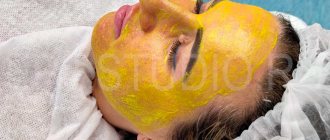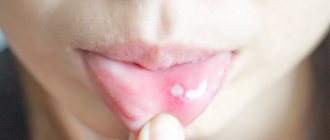Causes of white plaque
The causes of white plaque on the penis are classified into three groups:
- physiological. Associated with the peculiarities of the secretion of tyson glands located under the foreskin. The problem is aggravated by the lack of proper hygienic care of the genitals;
- non-infectious (endogenous). Caused by disruption of internal organs. Whitish accumulations on the penis are a concomitant symptom of chronic diseases or a sign of activation of opportunistic microorganisms that are part of the natural microflora of the body;
- infectious (exogenous). These are sexually transmitted diseases (STDs).
In the first case, it is enough for a man to get medical advice. To eliminate other causes, proper treatment is required.
Is a rash on the foreskin contagious?
Depending on the reason why rashes localized on the foreskin were discovered, the pathological condition can be transmitted through direct contact of the patient with a healthy person. A striking example is sexually transmitted diseases, which are accompanied by a characteristic rash.
In such situations, precautions are required:
- do not use other people’s towels or other personal items;
- use only your own intimate area care products;
- be extremely careful in public baths, swimming pools and saunas;
- In shared showers, it is mandatory to wear rubber slippers.
If the rashes were triggered by an allergic reaction or teenage changes, then the risks of infecting others are excluded.
White coating on the penis: when is this normal?
Why might a white coating on the penis be normal? Due to the increased production of a special male secretion - smegma. It is produced by tyson (preputial) glands under the foreskin - a type of exocrine sebaceous glands. Smegma facilitates the sliding of the foreskin when exposing the head of the penis. The secretion mixes with exfoliated epithelial cells, forming a white coating on the head of the penis. The problem is more common in men who have not undergone circumcision. Increased secretion of the preputial glands does not require special treatment. But if the rules of hygiene of the genital organs are not followed, it can lead to inflammation (balanitis, balanoposthitis) and oncopathology.
Prevention
For the purpose of prevention, it is necessary to exclude promiscuity, use barrier methods of contraception, maintain personal hygiene, and a healthy lifestyle. You need to avoid hypothermia, use only high-quality hygiene products and underwear. By following these simple measures, you can prevent not only the occurrence of urological ailments, but also health problems. However, in the event of a pathology, we strongly recommend that you do not delay diagnosis and treatment by contacting specialists in a timely manner, avoiding the complications of a possible disease.
White plaque on the penis: possible diseases
White plaque on the penis accompanies balanitis, provoked by an exacerbation of psoriasis. Skin pathology has no clear cause and is considered irreversible. When relapsed, psoriatic plaques can affect the genitals, causing inflammation.
White plaque on the penis and itching of the genitals are not uncommon with diabetes. The disease is characterized by metabolic disorders, failure of the production of the hormone insulin or insulin resistance. A diabetic's urine contains glucose, which irritates the head of the penis when urinating. As a result, balanoposthitis develops.
Curdled discharge on the penis occurs due to candidiasis (thrush) of non-infectious origin - increased activity of fungi of the genus Candida. Disturbance of microflora balance occurs against the background of:
- weakened immune status;
- prolonged psycho-emotional overload;
- incorrect antibiotic therapy;
- intoxication (including alcohol);
- systematic contact of the genitals with synthetic fabrics;
- unbalanced diet;
- failure of metabolic processes.
Candidiasis is transmitted sexually if a woman has progressive thrush.
A separate category consists of sexually transmitted diseases. Infection occurs through unprotected intimate contact with an infected partner. Redness of the penis and a white coating are among the symptoms of most sexually transmitted infections.
STDs and pathogens
| bacteria | |
| syphilis | treponema pallidum |
| gardnerellosis (in men) | gardnerella |
| gonorrhea | gonococci |
| ureplasmosis | ureplasma |
| viruses | |
| papillomatosis | human papillomavirus |
| cytomegalovirus infection (CMVI) | cytomegalovirus |
| genital herpes | herpes virus type 2 |
| prokaryotes | |
| mycoplasmosis | mycoplasma |
| protozoan parasites | |
| chlamydia | chlamydia |
| trichomoniasis | trichomonas |
Why do red dots and spots appear on the penis?
This sign signals the obvious presence of a pathological process in the body, both infectious and non-infectious.
The first group includes diseases that are often transmitted during unprotected coitus. The causative agents are viruses, bacteria or fungi. Red spots and dots may appear during the development of:
- candidiasis - in addition to isolated formations, a man is bothered by severe itching of the phallus, a whitish coating on the mucous membrane and white curdled discharge from the urethra;
- genital herpes - in this case, blisters with watery contents appear on the head, accompanied by severe unbearable itching;
- chlamydia - with this pathology, red spots on the head of the penis do not itch or hurt, but pus is released from the urethra, and the patient complains of pain in the scrotum, perineum and lower back;
- HPV - the main sign of the disease is a profuse rash; after some time, the rash increases in size, but there is no pain or itching;
- trichomoniasis - in this case, the spots are the result of irritation of the mucous membrane with pus released from the urethra; in addition to these symptoms, the man complains of swelling of the head and pain when urinating;
- balanitis and balanoposthitis - with these diseases, red spots on the penis itch, a burning sensation when urinating is disturbed, a white coating will be noticeable on the mucous membrane;
- syphilis - in the case of this pathology, one pimple turns into an ulcer, the formation does not hurt or itch, disappears after a while, and the patient may think that he has recovered without treatment (but this is a mistaken opinion).
There are other infectious diseases that can cause scarlet rashes to form on the penis. For example, scabies. Its causative agent is the scabies mite. When it penetrates the skin, a small rash occurs, accompanied by severe itching. The patient scratches the problem area, resulting in ulcers. Itchy pimples on the phallus are also characteristic of a viral infection such as molluscum contagiosum.
It's also worth noting that small red spots on the penis that turn into watery, itchy blisters can occur with chickenpox. In this case, the patient’s body temperature will rise, weakness and headache will occur. The rash associated with this disease usually appears on the skin all over the body.
Diagnosis and treatment
Treatment of diseases of the male reproductive system, including treatment of STDs, is the responsibility of urologists and andrologists. In case of an infectious lesion, therapy is prescribed by a venereologist. The cause of plaque on the penis is diagnosed based on the results:
- visual medical examination;
- studying the patient's premorbid background;
- laboratory tests: OCA and blood biochemistry, urethral smear, urine test;
- ultrasound examination of the pelvic organs.
Based on the results of the examination, the doctor chooses treatment tactics, determines medications, dosage and duration of the therapeutic course. For bacterial, prokaryotic, and parasitic infections, antibiotics are prescribed. Candidiasis is treated with antimycotics in tablets and ointments. For diabetes and psoriasis, basic treatment and diet therapy are adjusted.
Preventive measures help prevent unpleasant manifestations - careful genital hygiene, barrier contraception, strengthening the immune system and following the recommendations of the attending physician (for chronic diseases).
An important point is a timely visit to a urologist, both in the event of symptomatic complaints and for prevention. Make an appointment
Ointments for rashes on the foreskin
When forming a course of treatment, the dermatologist is guided by the reason why the rash on the foreskin was caused. As a mandatory action for sexually transmitted infections, daily baths in warm water with a solution of furatsilin are noted. This procedure should be repeated several times a day.
When pustules form, ointments based on antiseptic and antibacterial components are used, for example:
- oxolinic or ichthyol ointment;
- levomekol;
- Zovirax;
- clotrimazole.
The ointment is applied directly to the pimples themselves regularly for several days. The course of treatment itself can last from a week to several months, depending on the nature of the pathogen.
Medicines and topical products
Red, white, purulent and other types of pimples on the penis must be treated after determining the cause of their origin. Typically, this pathology is easily treated with internal or local medications. Only in the most exceptional cases do doctors recommend surgery, but only after all other treatments have been tried.
Effective ointments and gels with a wide spectrum of action
If the appearance of acne is caused by unsanitary conditions, then you should wash the genitals and apply zinc ointment to the acne. Using the ointment three times a day will dry out acne and reduce inflammation on the skin. For a bacterial infection on the skin of the penis, antibiotic ointment - tetracycline, erythromycin - will help well. But a medical specialist must prescribe the ointment.
Clotrimazole ointment fights pathogenic flora and pathogens in the genitourinary system. The product has a wide range of effectiveness against various pathogens, destroys their cells, and has a long-lasting effect on the skin.
Fluconazole gel is an antifungal drug that acts locally, eliminating redness, itching and swelling of the skin in a few days. Recommended for secondary etiology of acne on the penis.
Antibacterial and anti-inflammatory drugs
This group of drugs has bactericidal and bacteriostatic properties. The double effect is aimed at the death of parasitic cells of organisms and preventing their reproduction. Ampicillin and Flemoxin are effective remedies against inflamed acne and redness of the skin surface. Along with antibacterial therapy, antihistamines are taken, since during treatment allergic symptoms may arise to the active effect of anti-inflammatory drugs.
Antiviral and antifungal agents
Such medications are prescribed depending on the causative agent of the disease. Each viral agent of pathology has its own antiviral drugs. The herpes virus is well eliminated by Acyclovir (Zovirax). Sexually transmitted infections are treated with components against yeast-like fungi and identical viruses: Pimafucin, Nystatin, Diflucan. It is possible to use drugs of a combined group against several viral pathogens of acne on the penis: Polizhinaks, Terzhinan.
Medicines are available in tablets for oral administration, ointments for topical treatment of acne and redness on the skin of the penis. Medicines are used daily for a period of time determined by the attending physician. You can purchase medications at a pharmacy only with a prescription.
How to treat different types of acne on the penis
The origin of wounds, ulcers, ulcers and pimples of various types on the penis is always explainable from a medical point of view. Neoplasms anywhere in the body indicate disruptions in the healthy functioning of human systems and organs.
Treatment of this pathological condition of the skin of the penis is carried out by a medical specialist, and one thing needs to be understood for sure - you cannot treat acne on the penis on your own. Thus, there will be a risk of worsening your health if you take medications incorrectly, without knowing the exact reason for their appearance.
Which doctor should I contact with an intimate problem?
Initially, a man with lesions on the skin of the penis is recommended to consult a dermatologist and urologist. An external examination of acne is not enough to determine the source of its occurrence and the reason for its appearance on the reproductive organ. Contacting other specialists will allow you to accurately determine the root of the problem. As medical consultants, you need to listen to the opinions of several more doctors: a venereologist, endocrinologist, gastroenterologist, oncologist and other specialists, depending on the concomitant symptoms of the pathology.
Diagnostics and specific procedures
When diagnosing health problems, a man is asked to undergo some mandatory and specific procedures to determine the method of treatment:
| 1. | laboratory tests of blood and urine (for sugar, hormones, biochemical composition) |
| 2. | local studies of skin rashes (punctures, scrapings, epithelial samples); urethral smear |
| 3. | Ultrasound of the genitourinary system and other parts of the body on the recommendation of specialized specialists |
| 4. | additional tests and studies if there is a cause of acne |
The main methods of treating skin diseases
Treatment methods can be divided into 2 groups:
- elimination of skin diseases;
- restoration of the functioning of internal organs.
For existing pathologies within the body, complex treatment is prescribed to block the causes of the disease and the appearance of such an unpleasant symptom as acne.
If a skin disease is diagnosed, the following is prescribed:
- antibiotics to fight pathogens;
- hormone-containing agents that normalize the functioning of the sebaceous glands;
- antiseptics that cleanse the skin and provide an anti-inflammatory effect;
- antihistamines for the safe treatment of medications and allergic symptoms.










